From the Trenches
The Gates of Gath
By JARRETT A. LOBELL
Monday, October 05, 2015
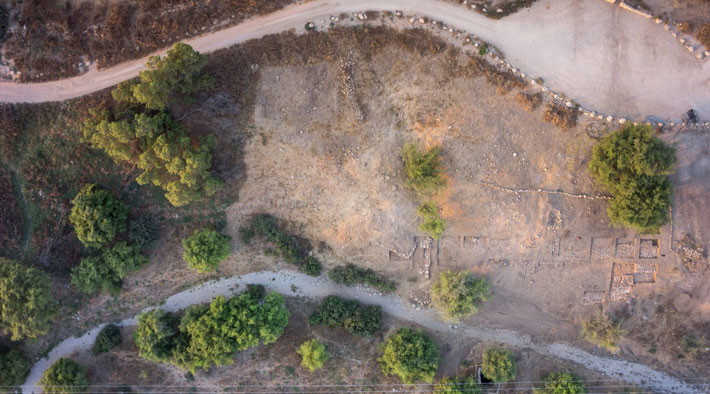
In the tenth and ninth centuries B.C., and probably even earlier, Gath was likely the largest city in Philistia, a pentapolis—five-city confederation—in the southern Levant. A team of archaeologists led by Aren Maeir of Bar-Ilan University has just uncovered one source of Gath’s strength—the monumental stone gate and a section of the wall that served as both entrance to and protection for the city. As home to the Philistines, including, according to the Old Testament, the giant warrior Goliath, Gath was the strongest and most dominant city in the region for nearly two centuries. Along with Ashkelon, Ashdod, Ekron, and Gaza, it was also a formidable foe of the early Judahite kingdom (also called the “United Kingdom” of David and Solomon) and, says Maeir, “played a central role in the geopolitical scene during these periods.”
Friars' Leather Shop
By DANIEL WEISS
Monday, October 05, 2015

An excavation in Oxford, England, conducted by Oxford Archaeology in advance of the expansion of a shopping center, has turned up a large number of leather and wood objects dating to the fourteenth century, when the site was occupied by buildings associated with the Greyfriars religious order. The artifacts were unusually well preserved because they were buried beneath the water table. Among the finds are around 100 leather shoes, a leather bag, a leather money purse, and a wooden bowl. “Somebody seems to have been saving up worn-out shoes,” says Ben Ford, the excavation’s project manager. “Maybe it was a cobbler working at the friary.”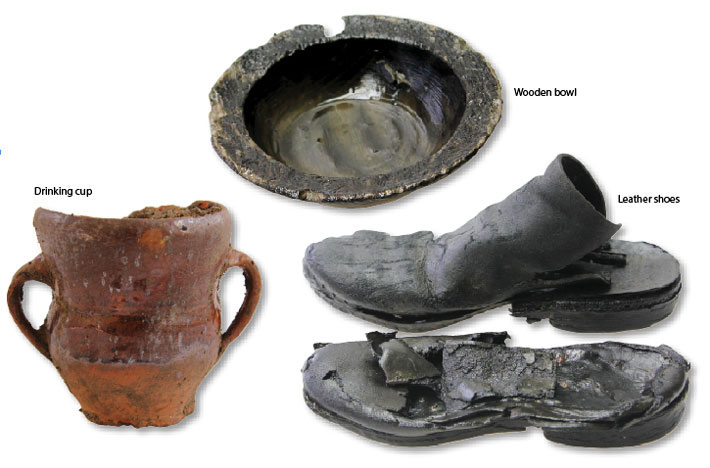
How Much Water Reached Rome?
By JASON URBANUS
Monday, October 05, 2015
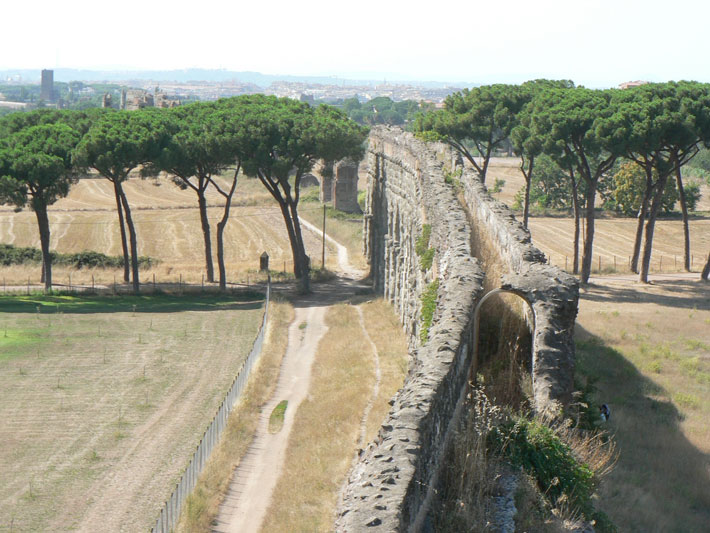 Rome’s 11 aqueducts, some extending for more than 50 miles, transported enough water to feed the city’s 591 public fountains, as well as countless private residences. However, experts have long been divided about how much water each aqueduct could actually convey. “Many assumptions have been made based on some pretty unreliable ancient data concerning the size of the flows of Rome’s aqueducts, giving some very inflated figures,” says archaeologist Duncan Keenan-Jones of the University of Glasgow. “We thought it was important to adopt a more scientific approach.”
Rome’s 11 aqueducts, some extending for more than 50 miles, transported enough water to feed the city’s 591 public fountains, as well as countless private residences. However, experts have long been divided about how much water each aqueduct could actually convey. “Many assumptions have been made based on some pretty unreliable ancient data concerning the size of the flows of Rome’s aqueducts, giving some very inflated figures,” says archaeologist Duncan Keenan-Jones of the University of Glasgow. “We thought it was important to adopt a more scientific approach.”
Keenan-Jones is part of a team of scientists who measured the amount of residual mineral deposits in the Anio Novus aqueduct to accurately gauge the depth and flow rate of water. By analyzing travertine—a type of limestone deposit—that was left on the aqueduct’s interior walls and floor, the researchers calculated a flow rate of 1.4 cubic meters per second, or between 100,000 and 150,000 cubic meters (25 to 40 million gallons) per day, a number below traditional estimates. The amount of water actually reaching the city was hindered by the buildup of travertine on the aqueduct’s interior, which considerably lessened the flow. “Our work has shown that often, even shortly after the aqueducts were built, the flow rates were well below the capacity estimates,” says Keenan-Jones. “Ancient Rome had a lot of water, but not nearly as much as has often been claimed.”
Paleo-Dentistry
By DANIEL WEISS
Monday, October 05, 2015
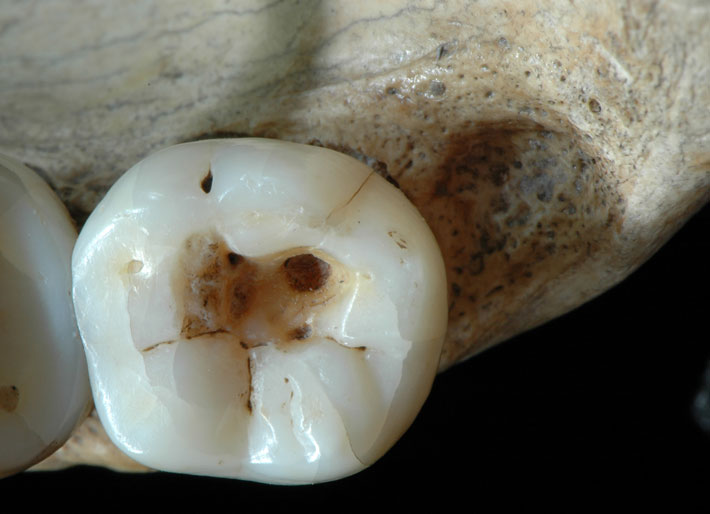 A team led by Stefano Benazzi of the University of Bologna has discovered the earliest known evidence of dental work in a 14,000-year-old molar from a male skeleton found in northern Italy in 1988. Examination of the tooth with a scanning electron microscope revealed striations consistent with scratching and chipping with a sharp stone tool, apparently to remove decayed material. Enamel in the area of the cavity is worn away, suggesting the treatment occurred long before death. Benazzi believes that the likely very painful practice of removing tooth decay probably evolved from the use of wooden and bone toothpicks, many of which have been found at Paleolithic sites.
A team led by Stefano Benazzi of the University of Bologna has discovered the earliest known evidence of dental work in a 14,000-year-old molar from a male skeleton found in northern Italy in 1988. Examination of the tooth with a scanning electron microscope revealed striations consistent with scratching and chipping with a sharp stone tool, apparently to remove decayed material. Enamel in the area of the cavity is worn away, suggesting the treatment occurred long before death. Benazzi believes that the likely very painful practice of removing tooth decay probably evolved from the use of wooden and bone toothpicks, many of which have been found at Paleolithic sites.
Off the Grid
By MALIN GRUNBERG BANYASZ
Monday, October 05, 2015
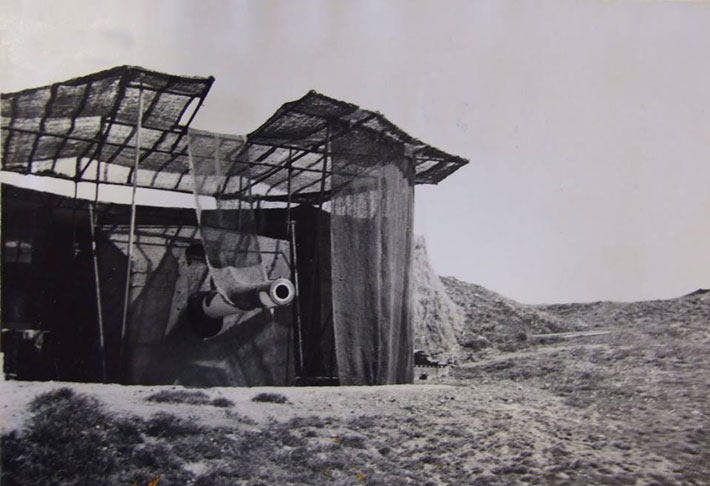 In 1940, newly installed British Prime Minister Winston Churchill ordered the construction of gun batteries and tunnels in the chalk of the White Cliffs of Dover, just 21 miles from Nazi-occupied France, to prevent German ships from moving freely through the English Channel. The Fan Bay Deep Shelter, a series of tunnels to protect the gun battery teams from bombardment, was completed in just 100 days and could house up to 185 soldiers.
In 1940, newly installed British Prime Minister Winston Churchill ordered the construction of gun batteries and tunnels in the chalk of the White Cliffs of Dover, just 21 miles from Nazi-occupied France, to prevent German ships from moving freely through the English Channel. The Fan Bay Deep Shelter, a series of tunnels to protect the gun battery teams from bombardment, was completed in just 100 days and could house up to 185 soldiers.
The tunnels were taken out of commission in the 1950s and filled with rubble in the 1970s. The National Trust purchased the land in 2012, and the next year the shelter was rediscovered. The volunteer staff of the Fan Bay Project, alongside archaeologists, mine consultants, engineers, and geologists, moved 100 tons of debris by hand over 18 months, revealing the tunnels’ infrastructure and a wealth of graffiti from the time. Jon Barker of the National Trust and Keith Parfitt of the Canterbury Archaeological Trust say that the tunnels are time capsules of emotion and provide great insight into wartime life.
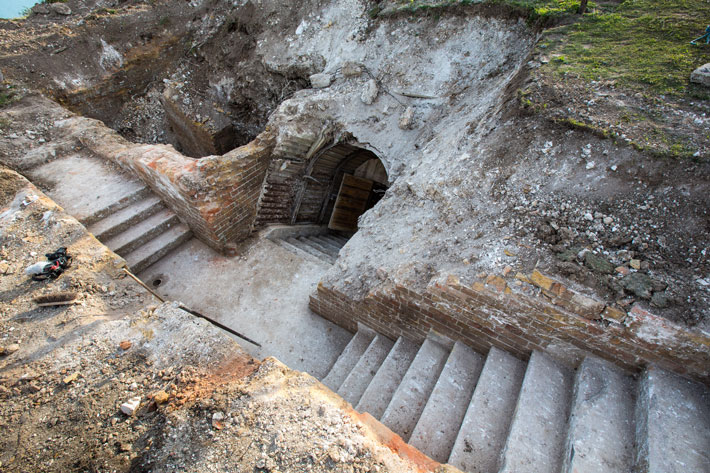 The site
The site
The Fan Bay installation consisted of a gun battery, searchlights, a generator house, barracks, magazines, and a plotting room, all situated above the Deep Shelter—five bomb-proof tunnels and a hospital totaling 3,500 square feet, sitting 75 feet below the top of the cliffs. The clearing of the tunnels has made them accessible to the general public for the first time. Reinforced with girders and metal sheeting, they preserve an abundance of wartime graffiti, including soldiers’ names and service numbers. Near a toilet are rhymes about one challenge of wartime: the lack of toilet paper. “If you come into this hall use the paper not this wall,” one reads. “If no paper can be found then run your arse along the ground.” Guides lead visitors—with hard hats and flashlights—down 125 steps to the tunnels, as well as to two World War I sound mirrors, large concave concrete discs that were among the first early warning air defense devices in Britain.
While you’re there
The White Cliffs of Dover live up to their name, and a variety of viewpoints offer sweeping vistas—Stay away from the cliff edge!—of the chalk facade, the channel, and, on a clear day, France. An engineering marvel of the Victorian period, the South Foreland Lighthouse just outside Dover was the first in the world to use electric light, and still serves traditional tea in the lighthouse-keeper’s cottage. In addition, there are Roman lighthouses in Dover, overlooking the site of Portus Dubris, a second-century port, which includes the Roman Painted House, a mansio, or government hostel, decorated with more than 400 square feet of murals related to Bacchus, the god of wine.
Advertisement
Advertisement
IN THIS ISSUE
From the Trenches
The Second Americans?
Off the Grid
How Much Water Reached Rome?
Paleo-Dentistry
Friars' Leather Shop
The Gates of Gath
Slinky Nordic Treasures
Lake George's Unfinished Fort
Last Flight of a Tuskegee Airman
Mysterious Golden Sacrifice
Aftermath of War
Game of Diplomacy
The Magnetism of the Iron Age
Rituals of Maya Kingship
Premature Aging
Switzerland Everlasting
Advertisement

Recent Issues
-
 May/June 2024
May/June 2024
-
 March/April 2024
March/April 2024
-
 January/February 2024
January/February 2024
-
 November/December 2023
November/December 2023
-
 September/October 2023
September/October 2023
-
 July/August 2023
July/August 2023
-
 May/June 2023
May/June 2023
-
 March/April 2023
March/April 2023
-
 January/February 2023
January/February 2023
-
 November/December 2022
November/December 2022
-
 September/October 2022
September/October 2022
-
 July/August 2022
July/August 2022
-
 May/June 2022
May/June 2022
-
 March/April 2022
March/April 2022
-
 January/February 2022
January/February 2022
-
 November/December 2021
November/December 2021
-
 September/October 2021
September/October 2021
-
 July/August 2021
July/August 2021
-
 May/June 2021
May/June 2021
-
 March/April 2021
March/April 2021
-
 January/February 2021
January/February 2021
-
 November/December 2020
November/December 2020
-
 September/October 2020
September/October 2020
-
 July/August 2020
July/August 2020
-
 May/June 2020
May/June 2020
-
 March/April 2020
March/April 2020
-
 January/February 2020
January/February 2020
-
 November/December 2019
November/December 2019
-
 September/October 2019
September/October 2019
-
 July/August 2019
July/August 2019
-
 May/June 2019
May/June 2019
-
 March/April 2019
March/April 2019
-
 January/February 2019
January/February 2019
-
 November/December 2018
November/December 2018
-
 September/October 2018
September/October 2018
-
 July/August 2018
July/August 2018
-
 May/June 2018
May/June 2018
-
 March/April 2018
March/April 2018
-
 January/February 2018
January/February 2018
-
 November/December 2017
November/December 2017
-
 September/October 2017
September/October 2017
-
 July/August 2017
July/August 2017
-
 May/June 2017
May/June 2017
-
 March/April 2017
March/April 2017
-
 January/February 2017
January/February 2017
-
 November/December 2016
November/December 2016
-
 September/October 2016
September/October 2016
-
 July/August 2016
July/August 2016
-
 May/June 2016
May/June 2016
-
 March/April 2016
March/April 2016
-
 January/February 2016
January/February 2016
-
 November/December 2015
November/December 2015
-
 September/October 2015
September/October 2015
-
 July/August 2015
July/August 2015
-
 May/June 2015
May/June 2015
-
 March/April 2015
March/April 2015
-
 January/February 2015
January/February 2015
-
 November/December 2014
November/December 2014
-
 September/October 2014
September/October 2014
-
 July/August 2014
July/August 2014
-
 May/June 2014
May/June 2014
-
 March/April 2014
March/April 2014
-
 January/February 2014
January/February 2014
-
 November/December 2013
November/December 2013
-
 September/October 2013
September/October 2013
-
 July/August 2013
July/August 2013
-
 May/June 2013
May/June 2013
-
 March/April 2013
March/April 2013
-
 January/February 2013
January/February 2013
-
 November/December 2012
November/December 2012
-
 September/October 2012
September/October 2012
-
 July/August 2012
July/August 2012
-
 May/June 2012
May/June 2012
-
 March/April 2012
March/April 2012
-
 January/February 2012
January/February 2012
-
 November/December 2011
November/December 2011
-
 September/October 2011
September/October 2011
-
 July/August 2011
July/August 2011
-
 May/June 2011
May/June 2011
-
 March/April 2011
March/April 2011
-
 January/February 2011
January/February 2011
Advertisement






